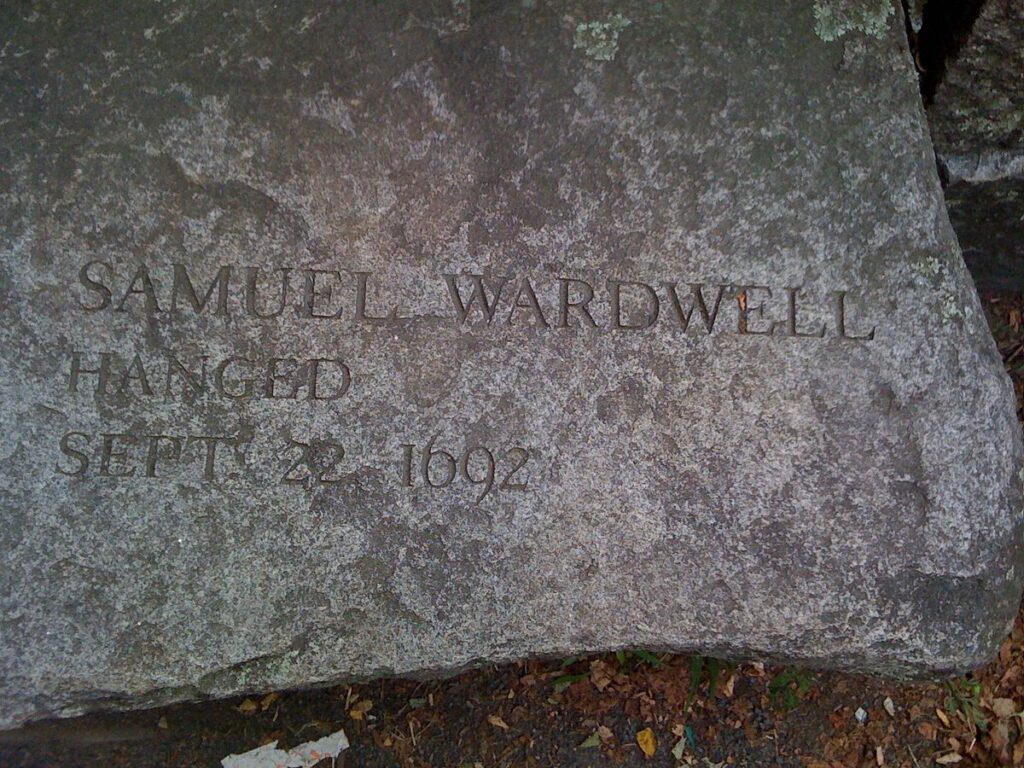Samuel Wardwell was one of the victims of the Salem Witch Trials, who were accused of witchcraft and then tried and executed. His execution would be part of the last mass execution to take place during the trials. He would die alongside seven other people.
The story of Samuel has received recent attention due to a show that traces back the ancestry of celebrities known as Who Do You Think You Are. In one of the episodes, Scott Foley traces back his ancestry to find Samuel, his 8-times-great-grandfather and sees what happened to him. A clip is provided at the bottom of the article.
Early Life of Samuel Wardwell
Samuel was born to Thomas Wardwell and Elizabeth Woodruff of Boston, Massachusetts Bay Colony. He would serve as an apprentice, which would lead him to Salem, where he married and had a son whom he named after his father.
His first wife died, and Samuel moved from Salem to Andover, where he would remain for the rest of his life.
Samuel Wardwell had a second marriage to Sarah Hooper Hawkes, who was also a widow and had children from the previous marriage. The two purchased a large farm in Andover where they would raise their large family. In addition to the children they already had, the two went on to have seven more children together.
Trial and Execution
It is not known who initially accused Samuel Wardwell of witchcraft, but the person who did accuse many in his family as well, which included his wife, daughter, and daughter-in-law. It is believed, but cannot be proven, that the initial accuser was Martha Sprague.
Unlike others who were executed, Wardwell initially confessed to being a witch and said that he had messed around with it when he was going through a tough time in his life. At the time, there had been some that had confessed, and the court did not execute, so he probably believed that this was the best course of action in order to save his life.
After his confession, his wife, daughter, and daughter-in-law also confessed to the crime.
Despite his efforts to go along with the court, he was indicted on two counts, one for covenanting with the devil and one for bewitching Martha Sprague.
Those who were accused were thrown into jail, and his young children were left to fend for themselves until they were put into temporary homes.
When the time arrived for the trial to take place, Samuel knew that his confession would not save him, so he was left with two choices: die by confessing to a lie or die by truth. He would choose the latter and quickly recant his confession after it was read to him.
At trial, Martha Sprague delivered the most effective accusation by relying on spectral evidence. This use of spectral evidence made it difficult for the accused to prove their innocence, especially someone like Samuel, who had already confessed.
She would not be the only accuser as others stepped in to accuse him of telling the future, knowing secret things, and fortune-telling.
Samuel maintained his innocence, but it would not be enough. He was sentenced to hang and would die on September 22, 1692.

The seven that also died alongside him were as follows:
- Martha Corey (September 22, 1692; wife of Giles Corey)
- Mary Easty (September 22, 1692)
- Mary Parker (September 22, 1692)
- Alice Parker (September 22, 1692)
- Ann Pudeator (September 22, 1692)
- Wilmot Redd (September 22, 1692)
- Margaret Scott (September 22, 1692)
At his execution, Samuel Wardwell maintained his innocence. While he was speaking to the crowd, the guard who was smoking tobacco blew smoke in his face, which caused him to choke. Many in the audience believed it to be a sign of God.
The Wardwell family would eventually be restored. To see a more detailed telling of Samuel Wardwell's trial and what happened with the family, I recommend the History of Massachusetts Blog.
